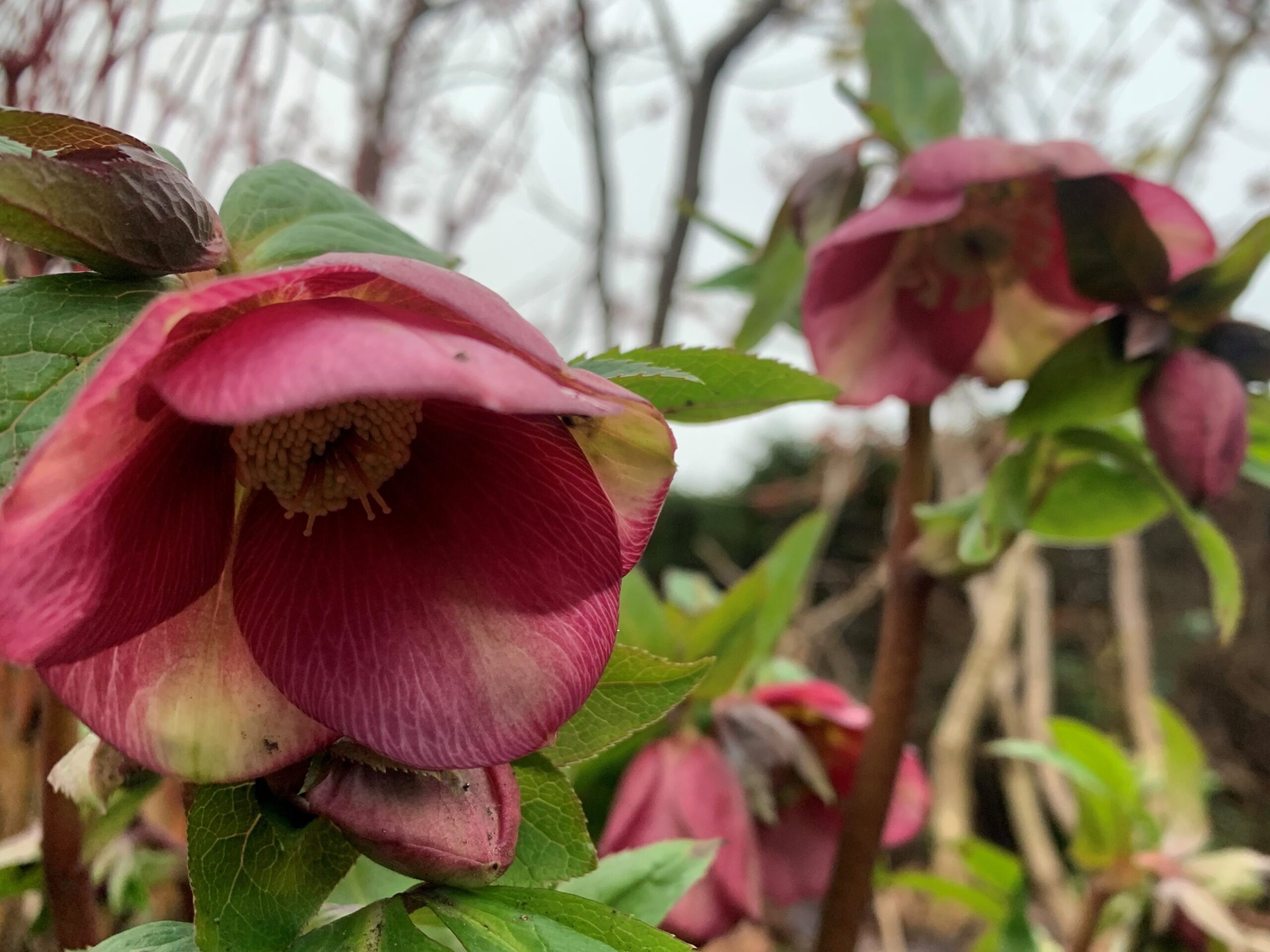Our Head Gardener Paula, recounts the many wonders of our winter garden in her nature diary, and inspires us to look more carefully and appreciate the beauty of nature all year long.
“January has been a cold and wet month, but by the time we reach the end of February there will be a distinctly Spring like feel to the air with lighter evenings, bird song, the first bulbs colouring the borders and leaf buds bursting on early trees. Look out for the hellebores in the ballet border, the winter aconites in the wildlife area and the snowdrops lining the pathway up to the Xylotheque.
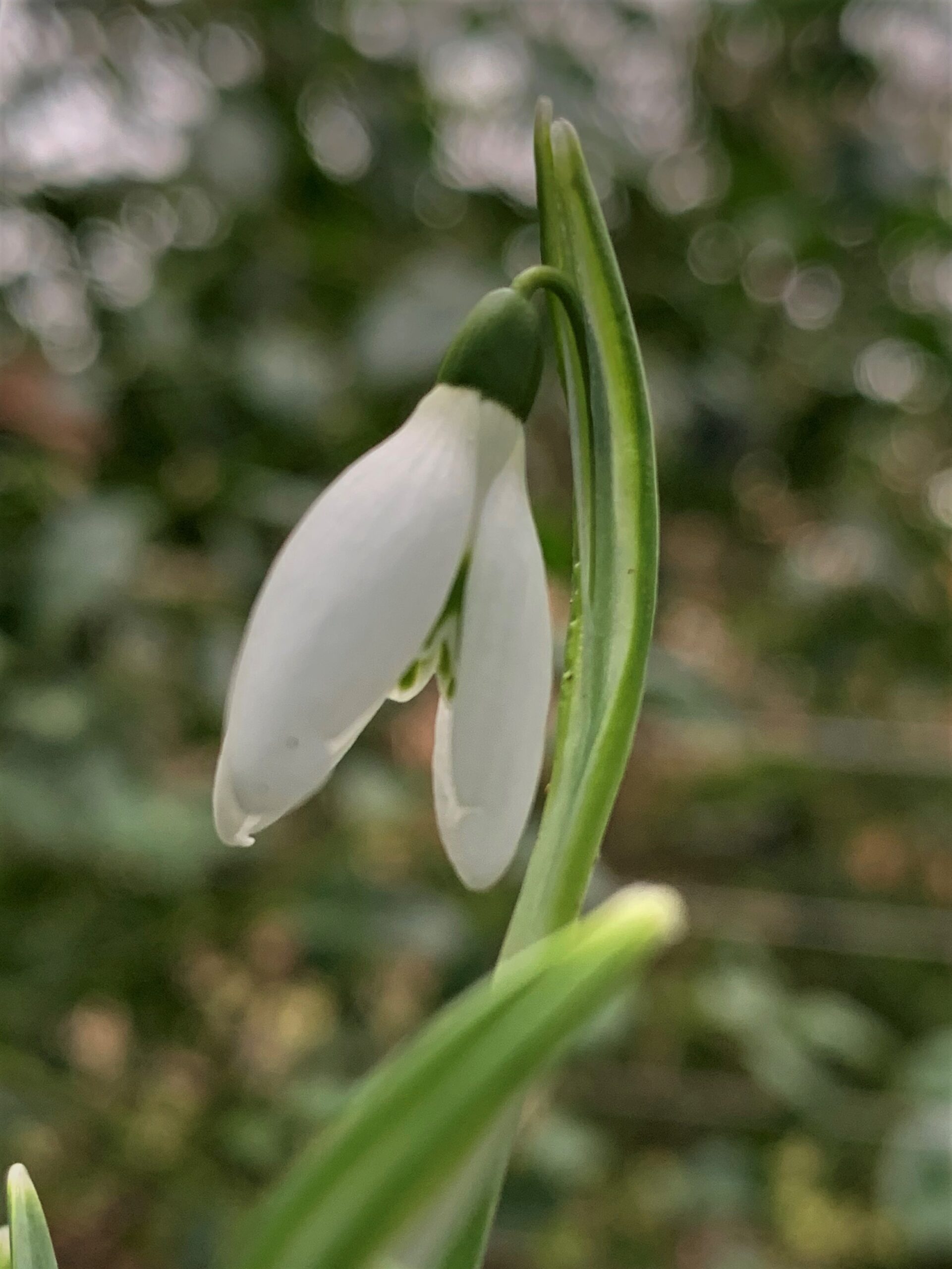
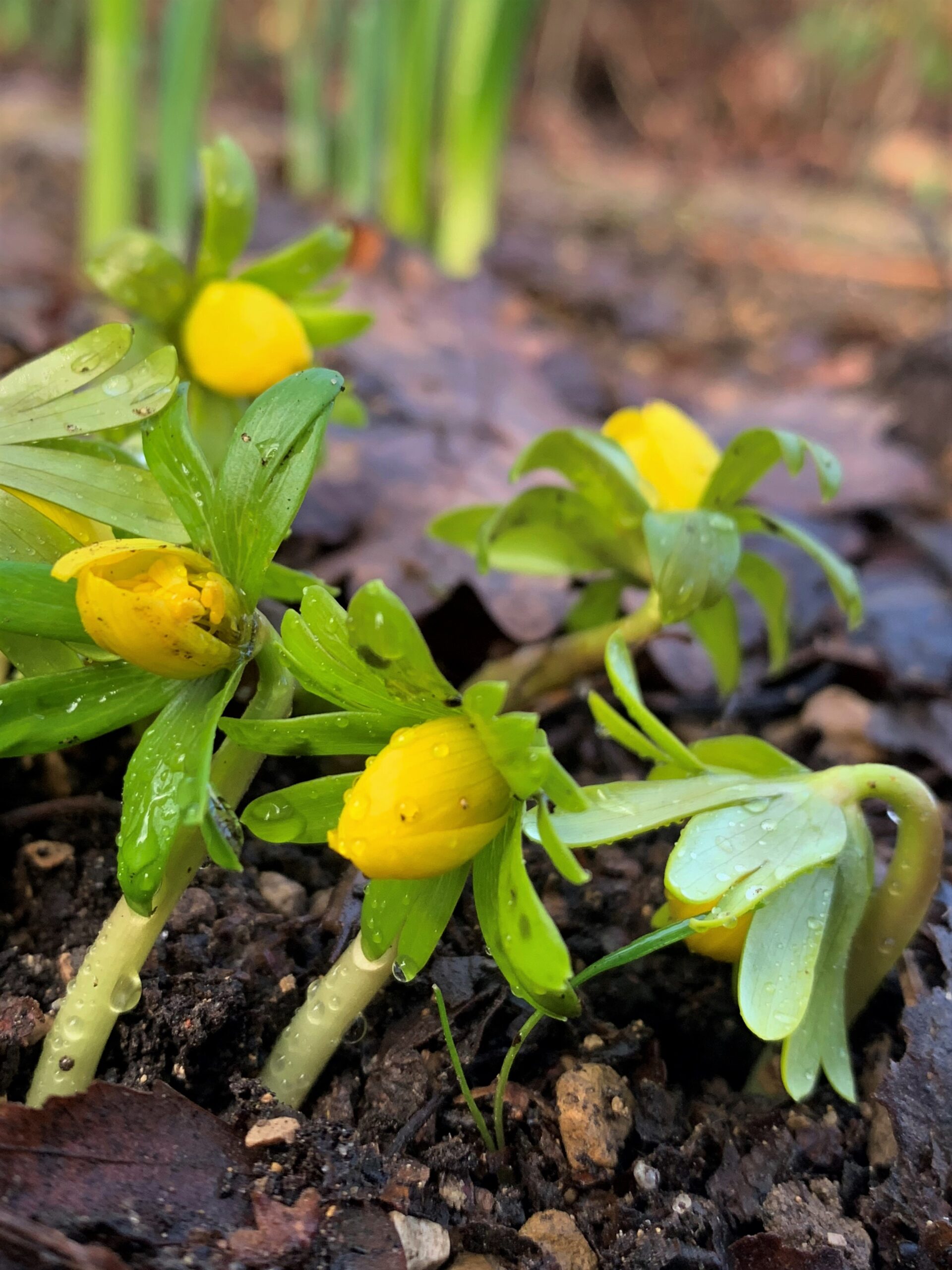
Garden Updates
We continue our winter maintenance jobs, with the annual cleaning of the greenhouses well underway. Removing the algal growth and dirt that accumulates on the roof and walls will ensure the plants receive maximum light during the growing season.
This is the time of year to prune many ornamental plants. This might be removing dead or diseased branches, restricting the size, improving the shape, or encouraging flowers, berries or fruit. Along the white wall border we have a variety of climbers, each with their own pruning needs. The Clematis montana will be left until after its spring flowering, following the old rhyme ‘if it flowers before June, do not prune’, but the wisteria needs the whippy stems cut back to 2 or 3 buds to ensure the flowers are not swamped by vigorous leafy growth. The branches of the espalier fruit trees are trained to grow horizontally against the wall, so we must limit pruning until the sap has slowed from July onwards. Too much pruning now will encourage the tree to put its energy into growing upwards instead of fruit production.
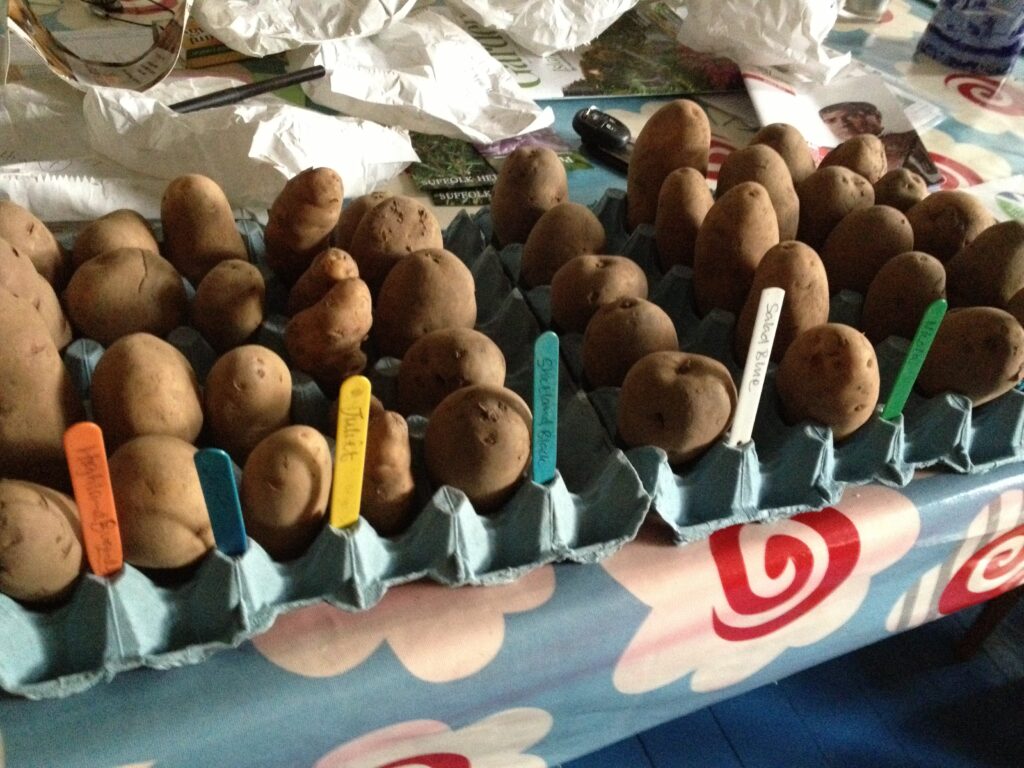
Growing notes
If you are planning to grow potatoes this year, now is the time to get your seed potatoes from a garden centre. These look just like supermarket potatoes but are certified virus free, important to reduce the spread of disease and ensure a good, tasty crop. Potatoes grow from sprouts that emerge from these tubers. You might be familiar with the spindly transparent sprouts that appear from potatoes kept in a dark cupboard, but if you expose your seed potatoes to light, they will produce strong dark sprouts that will ensure the potatoes get off to a good start when planted out next month. Choose an early variety if you plan to grow in a raised bed or a potato sack, these varieties will be ready to harvest sooner than main crop varieties and take up less space, giving you delicious new potatoes later in the summer. Varieties to look out for are charlotte, casablanca, red duke of york, and for something really different try the early maincrop variety ‘salad blue’ which is blue throughout and gives excellent blue mash!
Towards the end of the month we will begin to sow chillies and peppers as they can take a wee while to germinate and they need a long growing season to produce fruit. We love lemondrop, a hot yellow chilli with a hint of citrus, and Alberto’s Locoto from Real Seeds for something a bit different with fuzzy leaves, purple flowers and striking black seeds. Chilli Pepper Vegetable Seeds to buy in the UK from The Real Seed Catalogue. Sow seeds in a pot or tray of peat free compost and cover lightly with compost. Water and pop into a heated propagator or warm windowsill until they germinate. They can be potted up into their individual pots when they have their first set of true leaves.
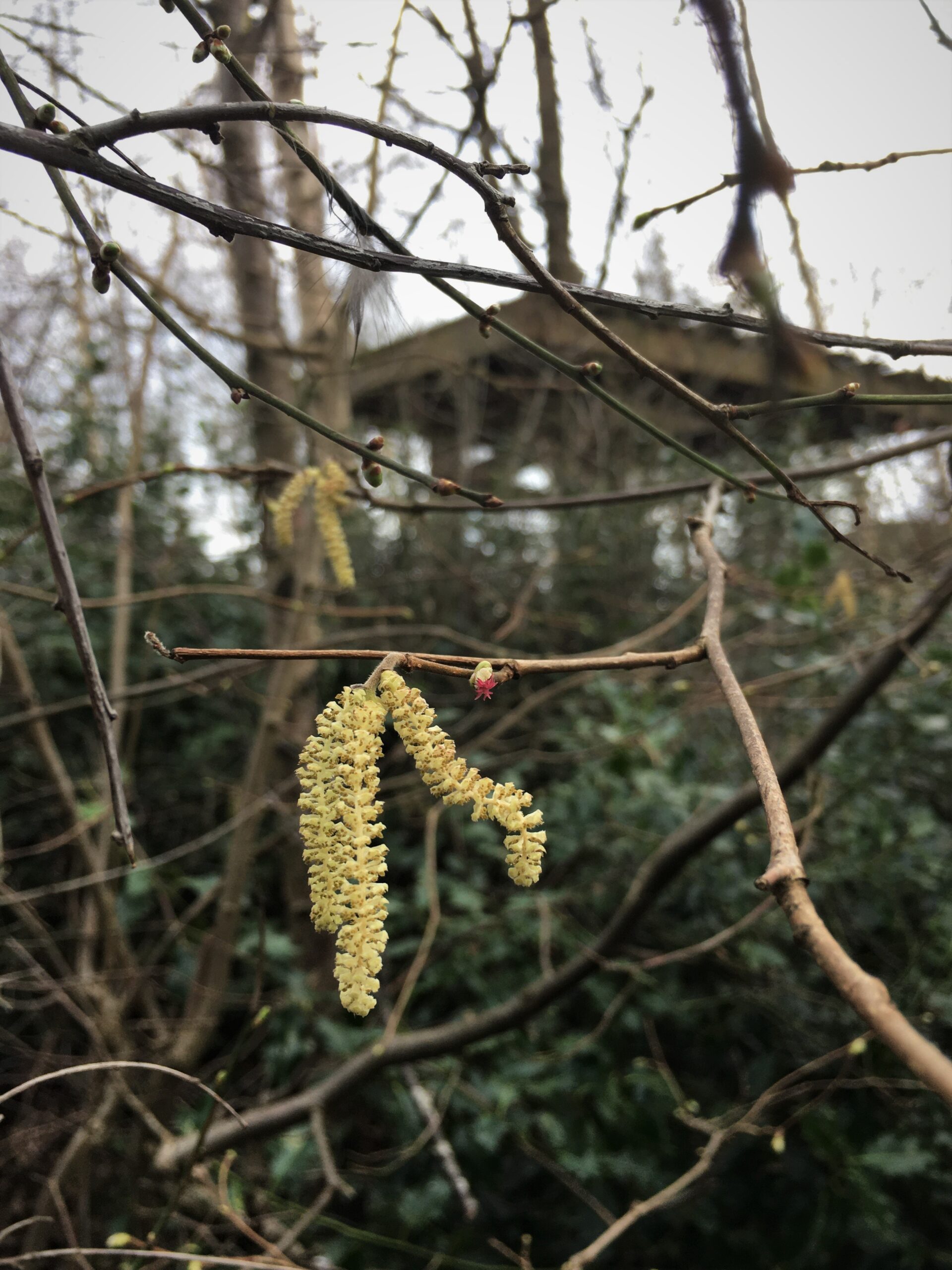

Nature notes
Snowdrops are blooming in the gardens now, and the first blooms opened around the same time as last year despite the recent very cold spell. We are now watching the hazel catkins unfurl and getting up close to look out for the tiny red female flowers bursting from the stems. The blackthorn flower buds are swelling and might be flowering by the end of the month, along with leaves emerging on hawthorn and elder. Another early flower to look out for this month is the yellow coltsfoot, popping up in our flowery meadow as well as pavement cracks and nooks, standing out before the large crinkly leaves appear. Historically this plant was used as a remedy for coughs, colds and sore throats but, along with our early spring crocus and iris bulbs, it is also an important source of nectar for any pollinating insects emerging from hibernation on a milder day.

